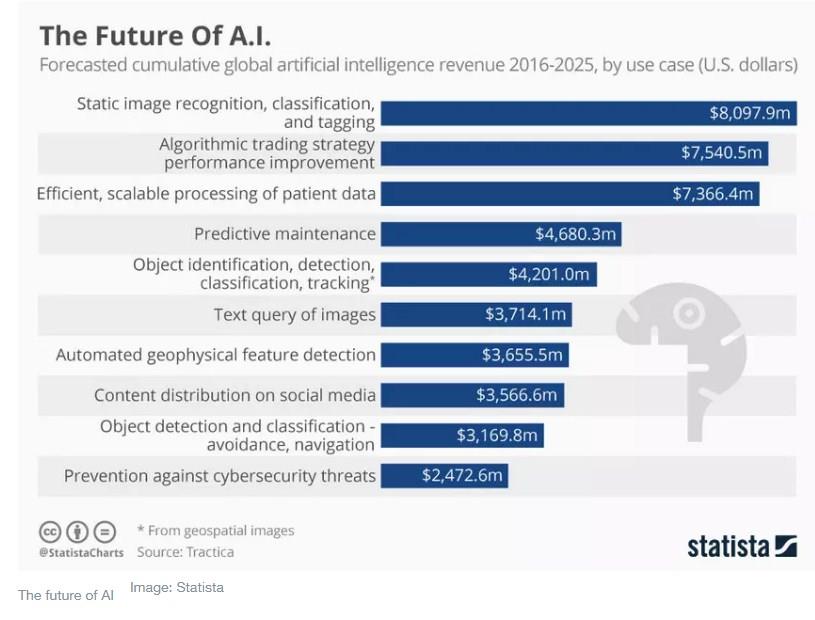by Umesh Sachdev*
The use of Artificial Intelligence (AI) in modern enterprises now involves much more than gathering data to better program computers for various tasks. It is changing the playing field, making AI a crucial component to help businesses grow and innovate.
Incorporating an overarching AI architecture is crucial to take businesses to the next level. Having a robust AI architecture will continue to fuel massive digital transformation within companies and business sectors, especially when combined with other advanced technologies like natural language processing (NLP), automation, machine learning (ML) and more.
Organizations across industries know that customer experience is the foundation for business success and critical to staying ahead of the competition. By optimizing conversations between people and automated systems, AI has augmented – not replaced – human capabilities to enhance the way businesses interact with their customers. To unleash AI’s true value for enriching customer experience and enhancing conversations, we must consider how this technology can be infused into existing business systems to build an AI architecture of the future.
Digitizing operations for the future
Businesses have rapidly changed in the last year and a half, as the COVID-19 pandemic universally pushed the way we operate and communicate virtually by helping people stay connected while apart. This has prompted increased adoption of digital strategies, including the use of AI and automation, across a range of applications in a bid to ensure business continuity, deliver better outcomes and curate high-quality contactless experiences.
The next phase for businesses is to build a multi-layered AI architecture that integrates industry knowledge with cutting-edge technologies such as NLP, robotic process automation (RPA), ML and advanced analytics. When deployed across a cloud-based infrastructure, it can have a positive impact across multiple business functions including sales and marketing, customer service, operations, finance, human resources and more. With the foundational elements of conversational automation and AI in place, what comes next? How can we further develop AI and raise its potential to make our engagement and interactions with both people and machines even better?
Understanding emotion and interpreting video data is the next step towards smarter AI. The real future of AI will be integrating speech and facial expressions to understand the entire context of human conversations. When this happens, businesses will see an overall reduction in operational costs, increased revenues and improved efficiencies with the use of AI across the entire business.

The science behind technology and emotion
International Data Corporation’s (IDC) Futurescapes predicts that, by 2022, at least 65% of Forbes’ Global 2000 companies will use NLP, ML and deep learning. These models will enable use cases such as automating tasks and answering questions across customer services, human resources, procurement and more. This powerful combination of AI and video has an enormous potential to result in new waves of transformation by delivering automated, intelligent and valuable conversations with customers that will drive better business results.
Businesses will be able to analyse and better understand the facial expressions, emotions and engagement levels of people during meetings and when customers interact with brands using video technology. The insights extracted from this data will help businesses to make better-informed decisions to improve business operations. Most importantly, it will help drive better, more human communications through digital channels, all thanks to AI.
For example, a speaker at a virtual conference presenting to an audience of more than a hundred will never truly know if each of the audience members is engaged. However, companies using video AI can detect and help interpret facial expressions and eye movements to help determine just how tuned in the audience is. All this information can then be fed back to allow the speaker to learn and improve on his or her presentation and public speaking skills – both in the moment and after the event. The information may even be taken a step further to gauge the audience’s sentiment towards the adoption of a particular product or service.
Unlimited potential to transform
In today’s digital-forward world, being able to “detect and act” on all the elements of conversations – including visual, emotional and engagement indicators – is becoming extremely important. For businesses looking for a competitive edge, having a strong AI architecture that integrates all functions of a business will be a strategic differentiator that can help innovate and reshape entire industries. AI will continue to play a pivotal role in the future of customer experience as businesses become increasingly reliant on smart technologies to support and boost the quality of their interactions with customers.
While still a work in progress, we remain a long way from AI as an “all-thinking, all-knowing, context-switching” technology. IDC predicts that only 20% of AI will be closer to artificial general intelligence (AGI) by 2026. At that point, AI will be capable of true reasoning, have human-like, logical leaps and will tie together multiple pieces of information from different sources to arrive at a complete answer – but that is still five years out.
As we look ahead, the AI architecture of the future will drive new waves of digital transformation by delivering automated and intelligent conversational and collaboration resources. This will enhance communication between all divisions across a business – ultimately driving better, more cohesive results.
*Chief Executive Officer, Uniphore
**first published in: www.weforum.org




 By: N. Peter Kramer
By: N. Peter Kramer

